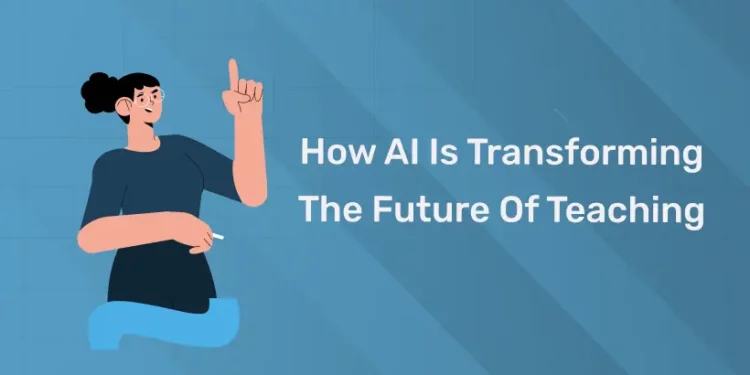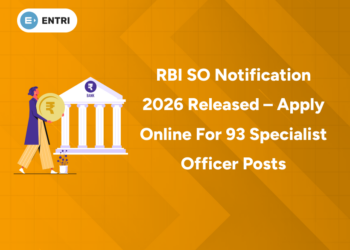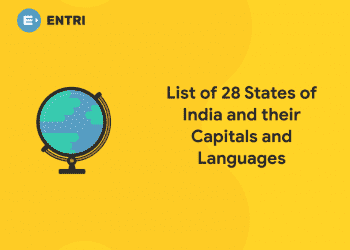Table of Contents
AI is revolutionizing the fabric of education by shifting from traditional to smart techniques, developing new teaching methods, and enhancing learning. AI-based education eases time management, improves active learning through better interaction between the learner and the teacher, and makes the classes more tailor-made to suit the particular needs of each learner. Innovations in AI are leading the future of education through smart content production, virtual assistants, and real-time performance tracking. Technological advancement has made sure that AI in teaching will progress in the years to come, hence a smart classroom assists in providing efficient learning among the student population. In this article, let’s explore how AI is transforming the future of teaching.
Enroll in our latest AI Training for Teachers
Virtual Assistants And AI Tutors
Technology has been incorporated into education more and more, and some of the most impactful innovations in this respect are the use of Virtual Assistants and AI Tutors. These AI-driven tools are revolutionizing the way students learn and how teachers manage their workload. Let’s have a look at their benefits and how they’re shaping the future of education.
What Are Virtual Assistants and AI Tutors?
Virtual Assistants are AI-powered apps that assist teachers and students with questioning, scheduling, reminders, and other classroom activities. Some examples include voice assistants like Siri, Alexa, and Google Assistant, and educational AI chatbots.
AI Tutors are Intelligent learning systems meant to provide personalized academic support to students. It assists students in subject-related queries through an explanation of concepts and offering practice exercises, just like a human tutor.
How They Are Transforming Teaching
The emergence of virtual assistants and AI tutors is transforming the face of learning and teaching. These advanced systems offer customized help, instant feedback, and self-learning mechanisms, ensuring learning to be efficient and engaging. Ranging from responding to the questions of the students in real-time to assisting the teachers with their clerical jobs, AI-driven tools are changing traditional classrooms into new-age, technology-enabled classrooms. With the increasing advancement of technology, AI is transforming the career of teaching, enabling student learning, and closing education gaps never before witnessed. Below given are some ways how AI transforms teaching.
Instant Doubt Resolution
Students frequently have doubts, even outside of regular academic hours. Artificial intelligence tutors and virtual assistants are ready around the clock to answer questions in real time. This ensures that learning is not limited to the classroom and allows students to get their questions answered right away.
Personalized Learning Experience
AI tutors identify students’ strengths and shortcomings and change lessons accordingly. If a student struggles with a specific topic, the AI offers more practice and simplified explanations to help them learn better.
Reducing Teachers’ Workload
AI is significantly streamlining teachers’ work by liberating them from the drudgery of monotonous work such as grading, taking attendance, and preparing lessons. While AI performs administrative work, teachers can provide more focus to student engagement and personalized learning. AI is also assisting students with inquiries, offloading the workload on teachers but not disrupting the learning process ever. The technology is transforming education as it optimizes learning and reduces the workload by the following ways.
- Automate attendance taking.
- Grading multiple-choice assignments
- Manage the lesson schedules
- Remind students of their homework and tests.
All of this reduces administrative burdens, allowing teachers more time to engage in interactive and creative teaching.
Interactive and Engaging Learning
Most AI tutors incorporate gamification, interactive quizzes, and voice-based learning to make studying fun and engaging. For example, language-learning apps like Duolingo use AI to create interactive lessons based on a student’s progress.
Supporting Students with Special Needs
AI-powered tutors and assistants provide voice-to-text, speech recognition, and language translation features, which help students with disabilities or those whose native language is different from the one used in the classroom to learn more easily.
Enhancing Remote Learning
As online education increases, virtual assistants and AI tutors are increasingly instrumental in guiding students through digital course work and tracking progress, hence making self-paced learning more effective.
Enroll in our latest AI Training for Teachers
Get Certified & Enhance Your Teaching with AI
AI for Teachers Course by Entri App: Learn AI-powered teaching skills, earn certification, and elevate your teaching career.
Join Now!Automated Grading And Assessment
Grading and assessments are critical components of the educational system, allowing teachers to evaluate student performance and track progress. Traditional grading techniques can be time-consuming and susceptible to human bias. With the current advancements in AI and automation, automated grading and assessment systems are transforming how students are graded, making the process much faster, fairer, and more efficient.
How AI Is Transforming Grading and Assessments
AI is transforming grading by automating evaluations, providing instant feedback, and ensuring fair assessment. It reduces teachers’ workload by grading tests, analyzing written responses, and assessing coding assignments. AI-driven analytics also help identify student strengths and weaknesses for targeted learning support.
Faster and More Efficient Grading
AI-driven grading tools can mark thousands of responses in seconds, so teachers no longer spend much time on grading student assignments. This will let them concentrate more on teaching and engaging students.
Less Human Bias and Mistakes
Human grading may be sometimes swayed by feelings, tiredness, or even subconscious biases. Automated systems apply consistent evaluation criteria, hence fair and objective assessments for all students.
Real-Time Feedback for Students
AI-driven assessment tools, on the other hand, give learners instant feedback, enabling them to identify mistakes and improve their learning instantly, rather than having to wait days or even weeks. This is true, especially for subjects such as mathematics, programming, and language learning.
Personalized Learning Insights
Automated grading systems analyze patterns in student performance and areas where they struggle. Teachers can use this information to provide personalized guidance and adapt their teaching methods accordingly.
Assessing Open-Ended Responses and Essays
More sophisticated AI models now use NLP to analyze written responses in terms of grammar, coherence, argument strength, and factual accuracy, providing learners with constructive feedback. Nonetheless, AI can never replace human judgment when grading creative or complex essays.
Scalability for Large Classrooms and Online Learning
With large classrooms and online courses containing thousands of students, manual grading becomes impractical. AI-based grading tools can ensure that each student is provided with accurate and timely assessment, hence making education more scalable.
Future Prospects Of AI In Teaching
Artificial Intelligence is constantly being developed, and in the very near future, its role in education will likely skyrocket. Technological advancement will further improve the process of teaching and learning through AI, making education much more tailored, efficient, and accessible. Here are some key future prospects of AI in teaching:
1. Hyper-Personalized Learning
Future AI-based systems are going to provide learning paths that will be much more personalized to each student’s special needs, strengths, and weaknesses. AI-driven platforms will be able to adjust in real time to provide customized lessons, quizzes, and study materials tailored to the learning style of each student.
2. AI-Powered Virtual Teachers
While AI will not be able to replace human teachers, it will surely play a huge role as a co-teacher or virtual instructor. AI-driven bots and holographic tutors will help students with different subjects, mostly in remote or self-paced learning.
3. Enhanced Emotional Intelligence in AI
The AI systems of the future will integrate the recognition of emotions in understanding students’ facial expressions, tone of voice, and how engaged they are. With this, AI is going to change its way of teaching in order to keep the student motivated and focused.
4. Completely Automated Administrative Tasks:
AI is going to completely automate time-consuming administrative tasks, including:
- Attendance tracking through facial recognition
- Automated grading for objective and subjective assessments
- Smart lesson planning based on progress analytics of the students
This will enable the teachers to have more time for creative and interactive methods of teaching.
5. AI-Driven Career Guidance:
AI will help students with career counseling by tracing their skills, interests, and academic performance. It will also suggest personalized career paths, recommend courses that are relevant, and even assist in job placements through platforms using AI-recruiting.
6. Virtual and Augmented Reality Classrooms
AI will elevate the level of virtual and augmented reality, making learning very immersive. It won’t be long before students go on AI-powered virtual field trips, participate in virtual science experiments, and take part in historical events as if they are real.
7. AI in Special Education
AI is going to be useful in inclusive education by offering special needs students the following:
- Speech-to-text and text-to-speech tools for differently abled students
- AI-powered sign language interpreters
- Adaptive learning systems catering to different abilities of cognition
- This will make learning more accessible to every student.
8. Global AI-Powered Education Systems
AI may lead to standardized, quality education globally and hence reduce the gap in education between the developed and the developing world. With AI-driven translation tools, language barriers will no longer be an obstacle to accessing global learning resources.
Enroll in our latest AI Training for Teachers
CONCLUSION
AI is revolutionizing the future of teaching, making education more tailored, efficient, and accessible. From AI-powered tutors and virtual assistants to automated grading and smart content creation, the list goes on in technological advancements that are quickly changing the way students learn and teachers instruct. While AI enhances the learning experience for students and relieves some of the educators’ administrative burden, nothing can replace human touch in teaching: creativity, empathy, and mentorship cannot be replaced. Responsible and ethical use of AI in education will make the future of teaching more engaging, inclusive, and adaptive to the needs of every learner with its further development. The key lies in finding a balance between technology and human interaction in creating an innovative yet student-centric system of education.
Get Certified & Enhance Your Teaching with AI
AI for Teachers Course by Entri App: Learn AI-powered teaching skills, earn certification, and elevate your teaching career.
Join Now!Frequently Asked Questions
Can AI replace teachers in the future?
No, AI is not a replacement for teachers. It can automate tasks, provide instant feedback, and help with learning tailored to each student; however, it lacks the human qualities of empathy, creativity, and emotional intelligence. Teachers will always be needed to guide, mentor, and inspire students.
Can AI help teachers improve their teaching methods?
Yes, AI-driven analytics can help track student progress, identify learning gaps, and recommend improvements in teaching strategies. Similarly, it helps teachers to be abreast of recent trends in education through AI-based professional development programs.
Can AI help reduce teacher burnout?
Yes! AI takes over grading, scheduling, attendance tracking, and other administrative tasks to free up instructors’ time to focus on active teaching, mentoring students, and creative lesson planning. This helps reduce stress and workload.
Are AI-powered classrooms expensive to implement?
The cost of AI-powered classrooms varies depending on the technologies and infrastructure involved. Where the more advanced AI tools are too costly, most schools can begin with affordable AI solutions, including learning management systems (LMS) and AI-driven tutoring apps.
Is AI ethical in education?
Ethical concerns around AI in education include data privacy, bias in AI algorithms, and the over-reliance on technology. Schools and policymakers must implement responsible AI use policies to ensure fairness, security, and accessibility.












